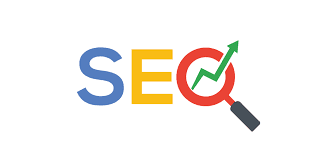Defining Search Engine Optimization (SEO)
Let’s start by asking an obvious question: what exactly is SEO? Well, SEO stands for ‘Search Engine Optimization, which is the process of getting traffic from free, organic, editorial, or natural search results in search engines. It aims to improve your website’s position in search results pages. Remember, the higher the website is listed, the more people will see it.
Good SEO involves many different activities, such as:
Identifying relevant keywords with good search traffic potential
Creating high-quality, useful content and optimizing it for search engines and for users
Including relevant links from high-quality sites
Measuring the results
These days, SEO is considered an essential marketing activity.
Differences between paid and organic search
From the outset, it’s important that you understand the differences between the organic, natural search synonymous with SEO and paid search. There are five key differences:
Position
The first difference is that paid search results appear at the top of search engine results pages, and organic results appear beneath them.
Time
Another key difference between paid and organic search is time. With paid search, you get near-instant results, sometimes in minutes; whereas, with organic search, results take more time - often weeks, months, and even years. So you have to play the medium to long-term game with organic search.
Payment
When it comes to paying, well, as the name suggests, with paid search traffic is paid. You pay-per-click (PPC) on a cost-per-click (CPC) basis. What that means is, you pay a fee every time a user clicks on your ad. So instead of relying on organic traffic to your website, you buy traffic for your page by paying Google to show your ad when your visitor does a search for your keyword. For organic search, traffic is free, although it does require an investment of both resources and time.
ROI
In terms of the return on investment or ROI, it's actually much easier to measure with paid search. That's partly because Google provides more keyword data that you can capture in Google Analytics. However, with paid search, ROI can stagnate or decline over time. With organic search, ROI is a little bit harder to measure, but it often improves over time. Over the long term, organic search can offer a very good return on investment.
Share of traffic
When it comes to the share of traffic, roughly 20% to 30% of searchers click on paid results, and 70% to 80% of searchers click on SEO results. So the lion’s share of clicks is actually on the organic results.
FREE eBook: A Guide to SEO for Small Business
What is SEO and how does it work?
Similarities between paid and organic search
It’s not all about differences – there are also similarities between paid and organic search:
Keyword research: You use a search engine for both paid and organic searches, and both require a user to enter a keyword. So you need to do keyword research for organic search and paid search.
Landing pages: Both types of search require you to create landing pages. For SEO, the landing page needs to be connected to your website. For paid search, it can be the exact same landing page you use for organic, or it can be a completely separate stand-alone page that sits off your website.
Traffic: Generating traffic is a major goal of both paid and organic searches. Most importantly, both paid and organic search traffic includes user intent. That is, someone is asking Google a question or searching for information – they are in an active mindset and as a result they are more likely to take action once they find this information.
The three pillars of SEO
As a digital marketer, knowing how to get your brand, website, or company found by searchers is a core skill, and understanding how SEO is evolving will keep you at the top of your game. While SEO changes frequently in small ways, its key principles do not. We can break SEO into three core components or pillars that you need to be familiar with – and action regularly:
Technical Optimization: Technical Optimization is the process of completing activities on your site that are designed to improve SEO but are not related to content. It often happens behind the scenes.
On-Page Optimization: On-Page Optimization is the process of ensuring the content on your site is relevant and provides a great user experience. It includes targeting the right keywords within your content and can be done through a content management system. Common examples of content management systems include WordPress, Wix, Drupal, Joomla, Magento, Shopify, and Expression Engine.
Off-Page Optimization: Off-Page Optimization is the process of enhancing your site’s search engine rankings through activities outside of the site. This is largely driven by backlinks, which help to build the site’s reputation.
What is SEO and how does it work?
FREE eBook: A Guide to SEO for Small Business
How do search engines actually work?
Search eng





